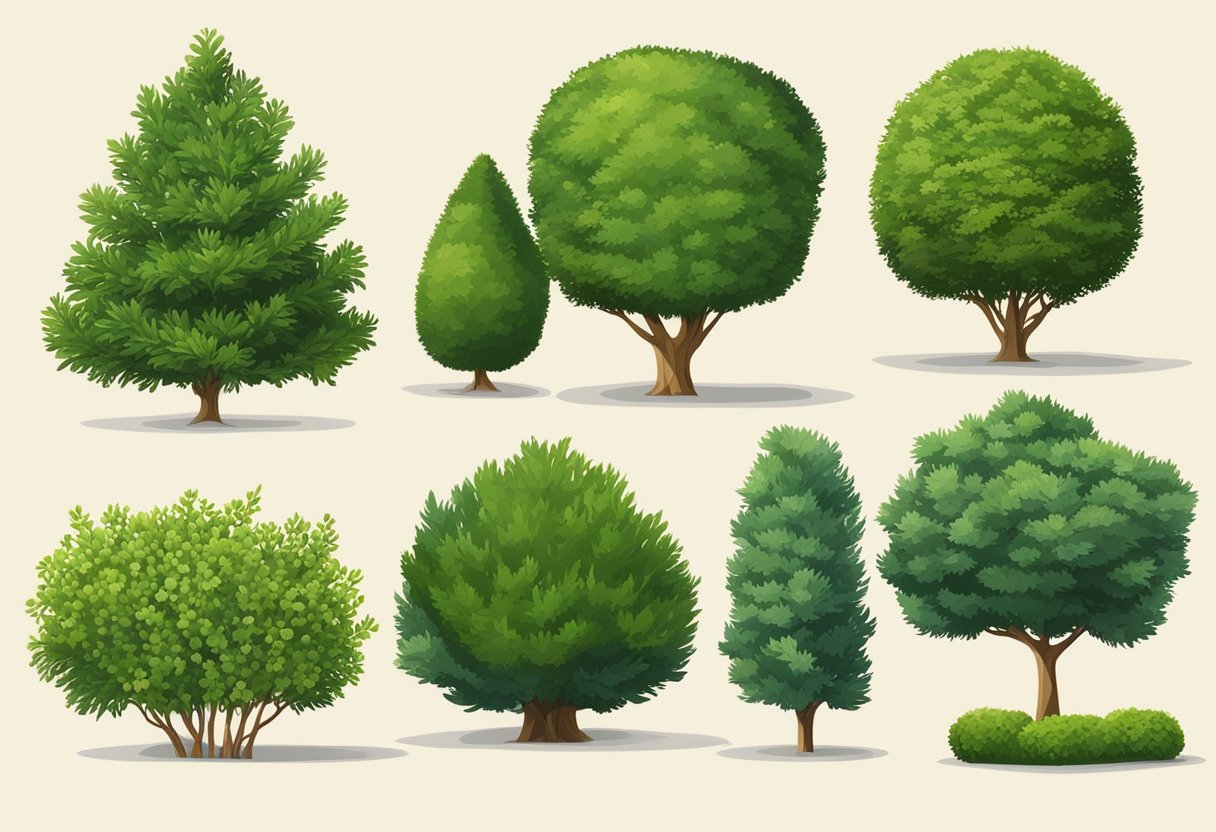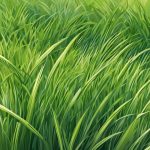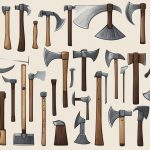Types Of Bushes
Bushes, also known as shrubs, play an important role in garden landscaping. They can be used to create borders, hedges, and focal points in a garden. There are many different types of bushes that can be used for various purposes, such as flowering bushes, evergreen bushes, and foliage bushes.
Choosing the right bushes for a garden can depend on several factors, including the climate, soil type, and desired aesthetic. It is important to consider the growth habit and size of the bush, as well as its maintenance requirements. Proper planting and care is also crucial for the success of bushes in a garden, including watering, fertilizing, and pruning.
Key Takeaways
- Bushes are an important element in garden landscaping and can be used for various purposes.
- Choosing the right bushes depends on factors such as climate, soil type, and desired aesthetic.
- Proper planting and care is crucial for the success of bushes in a garden.
Types of Bushes

Bushes are an essential part of any garden or landscape, adding color, texture, and structure to the outdoor space. They come in various types, including evergreen, deciduous, flowering, and dwarf shrubs. In this section, we will take a closer look at each of these types of bushes.
Evergreen Shrubs
Evergreen shrubs are a popular choice for landscaping due to their year-round foliage. They retain their leaves all year, providing a consistent green backdrop to your garden. Some common examples of evergreen shrubs include boxwood, holly, and juniper. These shrubs are ideal for creating hedges, privacy screens, and borders.
Deciduous Shrubs
Deciduous shrubs are another popular type of bush that lose their leaves in the fall and regrow them in the spring. They come in a wide range of colors, shapes, and sizes, making them ideal for adding visual interest to your landscape. Some common examples of deciduous shrubs include hydrangea, lilac, and butterfly bush.
Flowering Shrubs
Flowering shrubs are a great way to add color and beauty to your garden. They come in a wide range of colors and bloom at different times of the year, providing a constant source of interest. Some common examples of flowering shrubs include azalea, camellia, and rose.
Dwarf Shrubs
Dwarf shrubs are smaller versions of their larger counterparts, making them ideal for small gardens or container planting. They come in a wide range of colors and shapes, making them ideal for adding interest to your landscape. Some common examples of dwarf shrubs include dwarf boxwood, dwarf hydrangea, and dwarf spirea.
In conclusion, there are many types of bushes to choose from when it comes to landscaping. Whether you prefer evergreen, deciduous, flowering, or dwarf shrubs, there is a type of bush that will suit your needs. By understanding the different types of bushes available, you can create a beautiful and functional outdoor space that you can enjoy for years to come.
Choosing the Right Bushes for Your Garden
When it comes to selecting bushes for your garden, there are several things to consider. From soil and sunlight to privacy and maintenance, it’s important to choose the right bushes that will thrive in your garden.
Considerations for Soil and Sunlight
Before selecting bushes for your garden, it’s important to consider the soil and sunlight conditions. Some bushes prefer acidic soil, while others thrive in alkaline soil. Additionally, some bushes require full sun exposure, while others can tolerate partial shade.
It’s important to test your soil’s pH level to determine which bushes will thrive in your garden. You can purchase a soil testing kit at your local garden center or hire a professional to test your soil.
Bushes for Privacy and Screening
If you’re looking to create privacy or screen an area of your garden, there are several bushes that are perfect for the job. Evergreen bushes such as Arborvitae and Boxwood are great options for creating a natural screen.
For a more colorful option, consider planting flowering bushes such as Forsythia or Lilac. These bushes not only provide privacy but also add a pop of color to your garden.
Low-Maintenance and Easy-to-Grow Bushes
If you’re looking for low-maintenance and easy-to-grow bushes, there are several options to choose from. Bushes such as Butterfly Bush and Spirea are easy to care for and require minimal pruning.
For a low-maintenance option that provides year-round interest, consider planting a Dwarf Alberta Spruce. This bush remains green throughout the year and requires little pruning.
Overall, selecting the right bushes for your garden requires careful consideration of soil and sunlight conditions, as well as your desired level of maintenance and privacy. By taking the time to choose the right bushes, you can create a beautiful and thriving garden.
Planting and Caring for Bushes
When it comes to planting bushes, it is important to choose the right location and soil type. The first step is to select a spot that receives adequate sunlight and has well-draining soil. The soil should be rich in organic matter and have a pH level between 5.5 and 7.5. It is also important to plant bushes at the right time of year, usually in the early spring or fall.
Proper Planting Techniques
Before planting, it is recommended to dig a hole that is twice as wide and deep as the root ball. The roots should be spread out in the hole and the soil should be gently packed around them. It is important to water the bush thoroughly after planting to help it establish roots.
Watering and Fertilization
Bushes require regular watering, especially during the first few years after planting. The soil should be kept moist but not waterlogged. Fertilization is also important to ensure healthy growth and blooming. A slow-release fertilizer can be applied in the early spring and again in the fall.
Pruning and Maintenance
Proper pruning is essential to maintain the shape and size of the bush and promote healthy growth and blooming. Dead or diseased branches should be removed, and branches that are crossing or rubbing against each other should be pruned to prevent damage. It is recommended to prune bushes in the late winter or early spring before new growth appears.
In conclusion, planting and caring for bushes requires proper techniques and maintenance. By following these guidelines, you can enjoy beautiful blooms and glossy leaves year after year.
Common Bush Varieties and Their Characteristics
When it comes to landscaping, bushes are an excellent way to add texture and interest to your outdoor space. There are various types of bushes to choose from, each with its own unique characteristics. In this section, we will explore some of the most common bush varieties and their characteristics.
Evergreen Varieties
Evergreen bushes are an excellent choice for those who want year-long greenery. They are low-maintenance and come in a variety of shapes and sizes. Some of the most popular evergreen varieties include:
-
Yew: Yews are hardy bushes that can tolerate a wide variety of soil and light conditions. They have dense, evergreen foliage and can be used as hedges or living walls.
-
Juniper: Junipers are low-growing bushes that come in a variety of shapes and sizes. They have needle-like foliage and can be used as ground cover or as a border plant.
-
Boxwood: Boxwoods are slow-growing bushes that have small, glossy leaves. They are often used as hedges or as a topiary.
Deciduous Varieties
Deciduous bushes are those that lose their leaves in the fall. They are often chosen for their beautiful fall foliage and are available in a variety of colors and textures. Some of the most popular deciduous varieties include:
-
Hydrangea: Hydrangeas are popular for their large, showy blooms. They come in a variety of colors and can be used as a focal point in a garden.
-
Dogwood: Dogwoods are small trees or bushes that have beautiful spring blooms and colorful fall foliage. They are often used as a specimen plant.
-
Butterfly Bush: Butterfly bushes are known for their fragrant blooms that attract butterflies and hummingbirds. They come in a variety of colors and can be used as a border plant.
Flowering Varieties
Flowering bushes are an excellent way to add color and interest to your outdoor space. They come in a variety of colors and bloom at different times of the year. Some of the most popular flowering varieties include:
-
Azalea: Azaleas are popular for their beautiful spring blooms. They come in a variety of colors and can be used as a focal point in a garden.
-
Rhododendron: Rhododendrons are similar to azaleas and also have beautiful spring blooms. They come in a variety of colors and can be used as a specimen plant.
-
Camellia: Camellias are known for their beautiful winter blooms. They come in a variety of colors and can be used as a focal point in a garden.
In addition to these popular varieties, there are many other types of bushes to choose from, including viburnum, euonymus, mountain laurel, holly, rose bushes, barberry, forsythia, photinia, arborvitae, and Japanese laurel. When choosing a bush for your outdoor space, it’s important to consider the plant’s characteristics and how it will fit into your overall landscape design.
Landscape Design with Bushes
Bushes are an essential part of any garden landscape. They provide structure, texture, and color to any outdoor space. In this section, we will explore how to use bushes in different ways to create beautiful and functional landscapes.
Creating Focal Points with Bushes
One of the best ways to use bushes in landscaping is to create a focal point. A focal point is a feature that draws the eye and adds interest to the landscape. Bushes can be used as a specimen plant to create a focal point. A specimen plant is a plant that stands out from the rest of the landscape because of its unique shape, color, or texture. Some examples of bushes that make great specimen plants are the Japanese maple, the hydrangea, and the weigela.
Using Bushes for Foundation Plantings
Foundation plantings are bushes that are used to soften the edges of a house or building. They provide a transition between the architecture of the building and the landscape. When choosing bushes for foundation plantings, it is important to consider the size, shape, and color of the bushes. Some great options for foundation plantings are the boxwood, the holly, and the spirea.
Incorporating Bushes in Mixed Borders
Mixed borders are a combination of bushes, flowers, and other plants that are arranged in a border around a garden or landscape. Bushes can be used to add height, structure, and texture to a mixed border. When choosing bushes for a mixed border, it is important to consider the color, shape, and texture of the bushes. Some great options for mixed borders are the butterfly bush, the rose of Sharon, and the viburnum.
In conclusion, bushes are an essential part of any garden landscape. They provide structure, texture, and color to any outdoor space. By using bushes in different ways, such as creating focal points, using them for foundation plantings, and incorporating them in mixed borders, you can create a beautiful and functional landscape.






